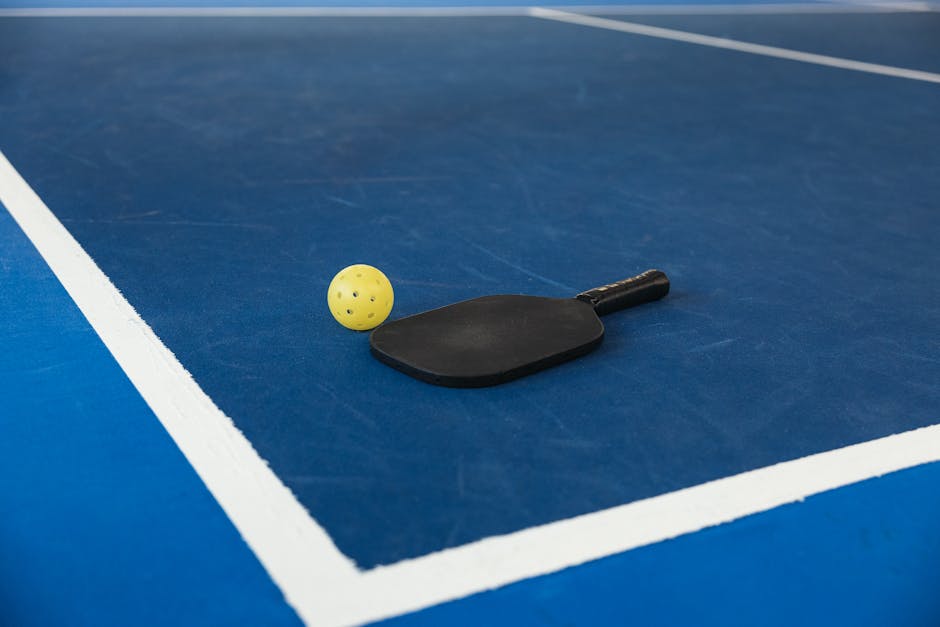Pickleball has experienced explosive growth in the past few years, drawing in players from other sports—including a substantial number from golf. When PXG, a brand associated with high-end golf engineering, decided to enter the pickleball market, it was more than just another equipment launch. This move marks a new chapter for quality-driven pickleball players and may change how the entire industry approaches gear, innovation, and performance.
Why PXG Chose Pickleball—And Why Players Should Care
PXG’s step into pickleball was prompted in part by how many golfers are now also playing pickleball, with estimates that nearly one in three golfers are regularly hitting the pickleball court. In the US alone, pickleball saw nearly 50 million adult participants last year according to industry associations. This creates a natural bridge: PXG isn’t targeting a new demographic so much as deepening its relationship with an audience who prizes performance, social engagement, and premium products—across whatever sport they choose.
From our perspective as equipment-focused players, this means:
- We gain access to technology and build quality previously reserved for elite golf clubs.
- The standard for what makes a “premium” paddle will continue to rise, benefitting players who value strategy, control, and consistency in their game.
- Other brands could be encouraged to innovate more aggressively, making the entire market more exciting for gear enthusiasts and serious players alike.
Breaking Down PXG’s XP1 and XP2 Paddles: What Makes Them Special
At launch, PXG brought out two models: the XP1 and the XP2. Designed to fit different play styles and ambitions, these paddles demonstrate what happens when high-level R&D meets pickleball’s unique demands.
| Feature | PXG XP1 | PXG XP2 |
|---|---|---|
| Shape | Standard (rounded) | Elongated (pro-style) |
| Sweet Spot | Large, central | Higher on the face |
| Player Target | All skill levels (focus on control and forgiveness) | Advanced/competitive (focus on reach and power) |
| Core | Polypropylene honeycomb (8mm cell size)—enhances energy transfer and reduces vibration | |
| Surface | 3K woven carbon fiber—rigid, light, and responsive | |
| Finish | Precision-textured face for spin and ball control | |
| Design | Edgeless, aerodynamic build for faster swings and less drag | |
Why do these details matter for us? For players who’ve struggled to find paddles that balance power and control, or who want a familiar golf-club-like consistency in feel, PXG’s approach is a big deal. That 8mm core doesn’t just provide a comfortable feel—it helps with shot accuracy and, for some, can mitigate arm and shoulder fatigue due to improved vibration dampening. The textured surface opens doors to more advanced spin tactics, which is especially appealing as gameplay skews more competitive.
Who Will Get the Most from PXG’s Paddles?
We see distinct groups of players who stand to benefit the most from PXG’s arrival:
- Performance Seekers: If you obsess over paddle specs and can genuinely feel subtle differences in responsiveness and swing speed, the tech-forward design of the XP1 and XP2 is worth exploring.
- Golf Crossover Fans: Anyone who already invests in premium golf gear will likely appreciate the consistency, feel, and brand experience PXG brings to pickleball.
- Players Managing Fatigue or Injury: Vibration dampening and ergonomic balance mean these paddles could help reduce minor arm and shoulder soreness—something we know to be a key pain point for our community. For further resources on gear that can help prevent and manage injury, check out our guide on preventing and managing pickleball elbow.
How PXG’s Entrance Shifts the Equipment Market
The most significant change we’re anticipating isn’t just fancier paddles. It’s a broader shift toward:
- Accelerated Innovation: As golf engineering moves to pickleball, expect faster evolution of paddle core materials, textures, and aerodynamics. Premium brands may drive smaller brands to keep up or specialize in niche areas—great news for players looking for unique paddle characteristics.
- Increased Customization: Like in golf, players can likely look forward to paddles optimized for very specific style (control, spin, reach, etc.), making it easier to find gear perfectly suited to personal strengths and weaknesses. If you want to get a sense for how core thickness, material, and other factors fit into this, see our science-backed buying guide and thickness breakdown.
- Premium Price Tiering: PXG’s paddles are positioned at the high end of the market. While that isn’t for everyone, it raises the ceiling for what’s possible in pickleball tech—and for those ready to invest, the ceiling for what’s possible in their own gameplay.
- Broadening the Community: With major brands endorsing pickleball, we’re likely to see more crossover between golf clubs, tennis clubs, and athletic facilities—helping more players connect, join leagues, and step up their game with better gear and coaching.
Is PXG Right for You—Or Is This Just the Beginning?
Our advice is twofold. If you:
– Love testing new equipment and are after the edge that precise engineering can bring, you’d likely appreciate what’s on offer here.
– Prefer incremental improvements and value, or are still early in your journey, you might continue to find exceptional joy and playability in other premium paddles (see our favorite paddles and beginner paddle picks).
For those aspiring to competitive play or who already see themselves as gear aficionados, PXG should now firmly be on your radar along with a handful of other elite pickleball gear innovators. It’s also reasonable to expect that as PXG shakes up the space, other established sporting brands may follow, which should benefit all high-level players through more choices and continual product improvement.
What’s Next in Performance Pickleball Gear?
With major brands like PXG entering the field, many in our community are speculating about a wave of “tour-level” paddles to match the sport’s growing professionalism. For players, that means more gear specifically engineered for advanced play, tournament settings, and specialized strategies (think net play, power drives, or control-oriented dinks). If you’re curious about how to adapt your game and gear as the sport evolves, don’t miss our resource on transitioning from baseline to net play—critical for making the most of pro-grade paddles.
Our Take: Stay Informed, Stay Ahead
Whether you’re ready to invest in the latest PXG paddle or are studying the impact of these market moves before your next gear upgrade, we believe it’s a win for players. The result should be more thoughtfully designed equipment and a more vibrant pickleball community—two things we care deeply about.
Looking for more advice, hands-on reviews, or guidance selecting your next paddle? Join our mailing list for expertly curated content and gear breakdowns made for players who, like you and us, value quality and staying ahead of the curve. And if you’re eager to keep learning, explore these related reads:
- What to Look for in a High-Performance Pickleball Paddle
- Carbon vs Fiberglass Pickleball Paddles
- How Global Equipment Trends Are Shaping Pickleball
If you want the latest on pickleball innovations, equipment reviews, and actionable playing tips, visit us at PickleballMate—your resource for players who expect more.



